Simplicity
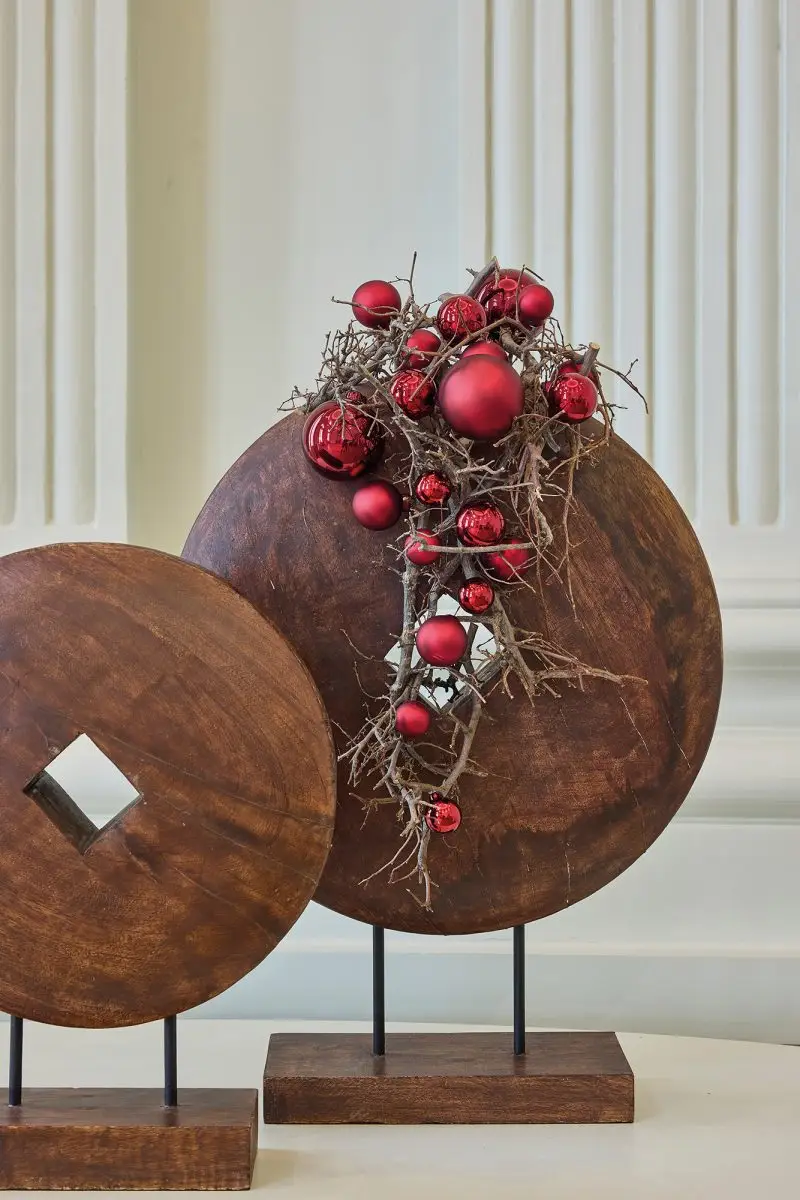
Two disc-shaped wooden sculptures form the basis of this simple Christmas arrangement. A branch construction connected by metal wire is attached to one of the discs. Different sizes of shiny and matte "burgundy" baubles are attached to the branch construction.
Floral
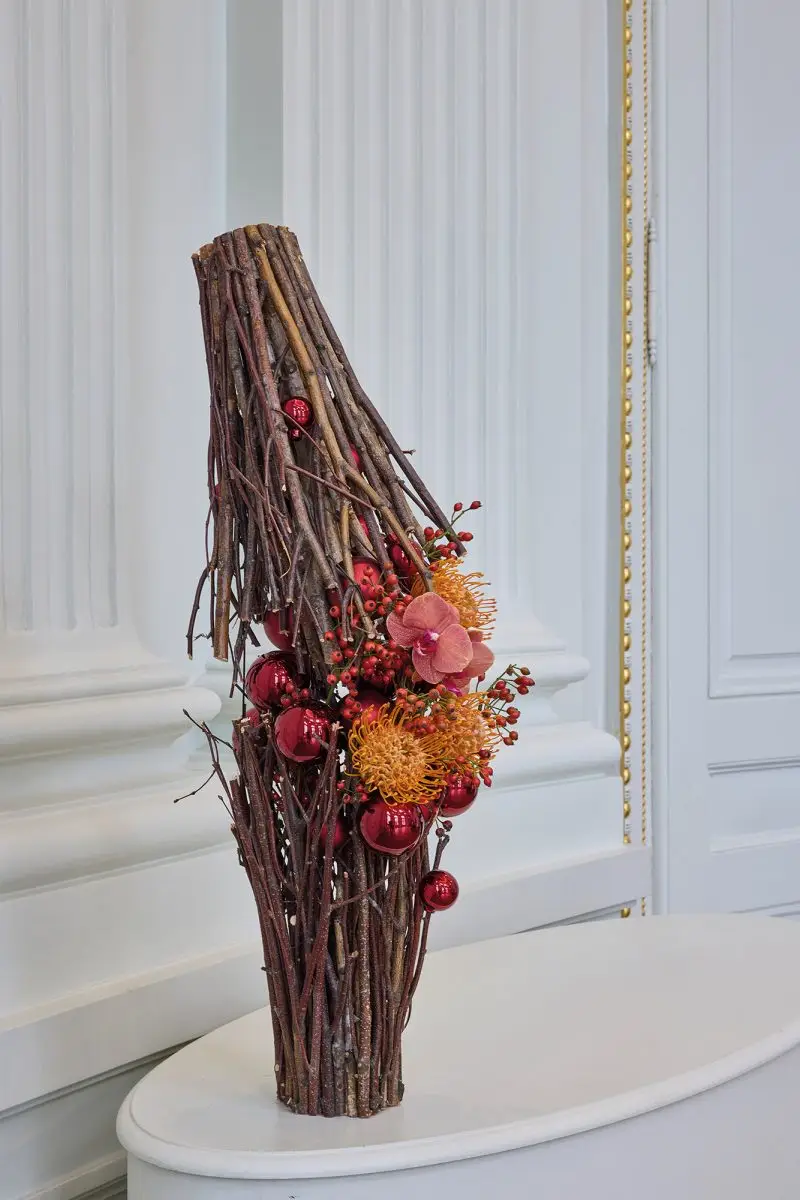
An open basket was formed from branches that mirrored each other. Wine-red baubles are wedged between the branches. Rose hips, Leucospermum nutans and Phalaenopsis orchids placed in glass water tubes form the floral filling.
Christmas Flower Ball
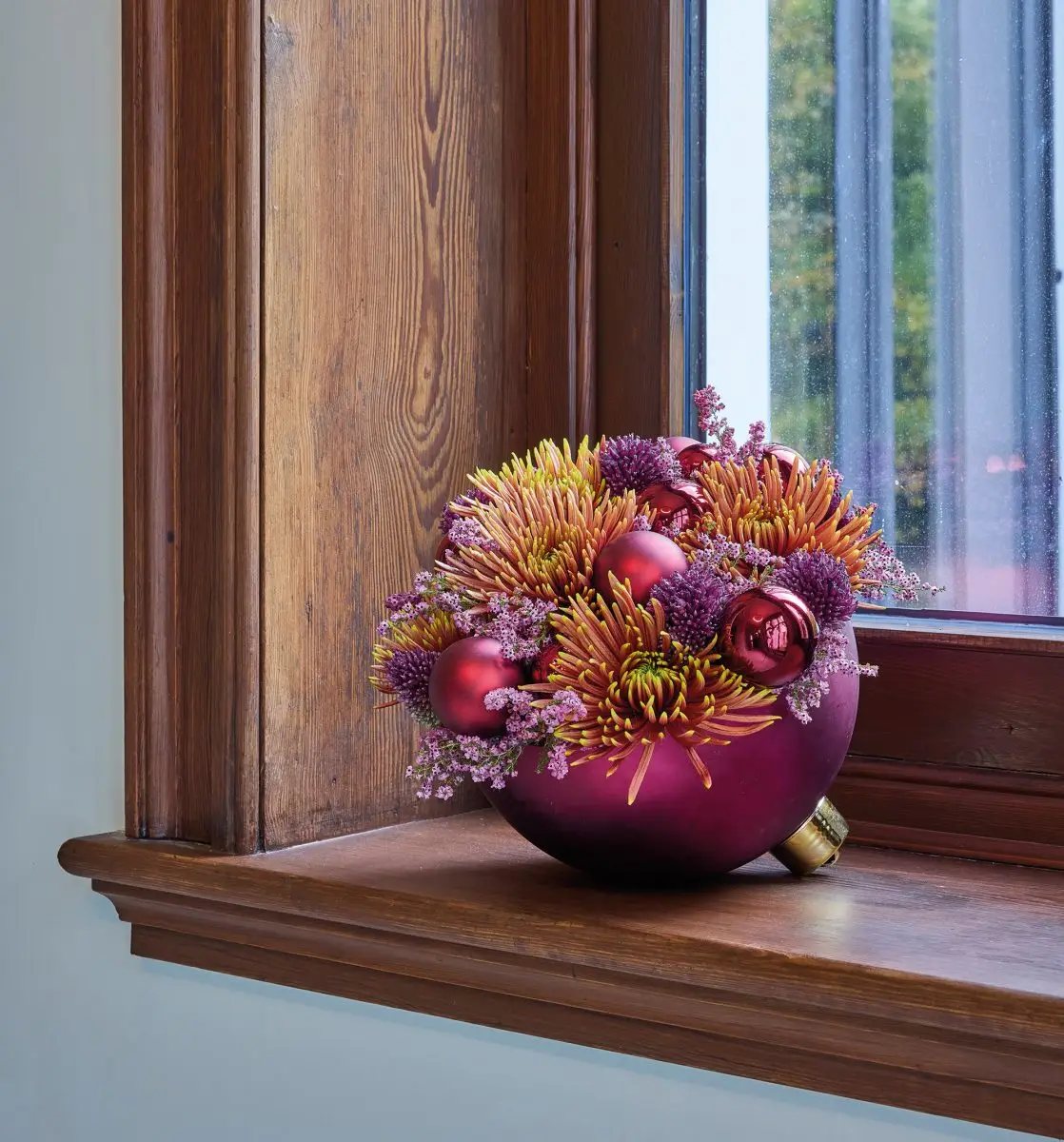
An XXL bauble was cut in half after which one half was filled with Oasis Bio floral foam. In it, star-shaped chrysanthemums, Allium, Erica and small baubles were inserted in purple-red hues.
Festive Advent
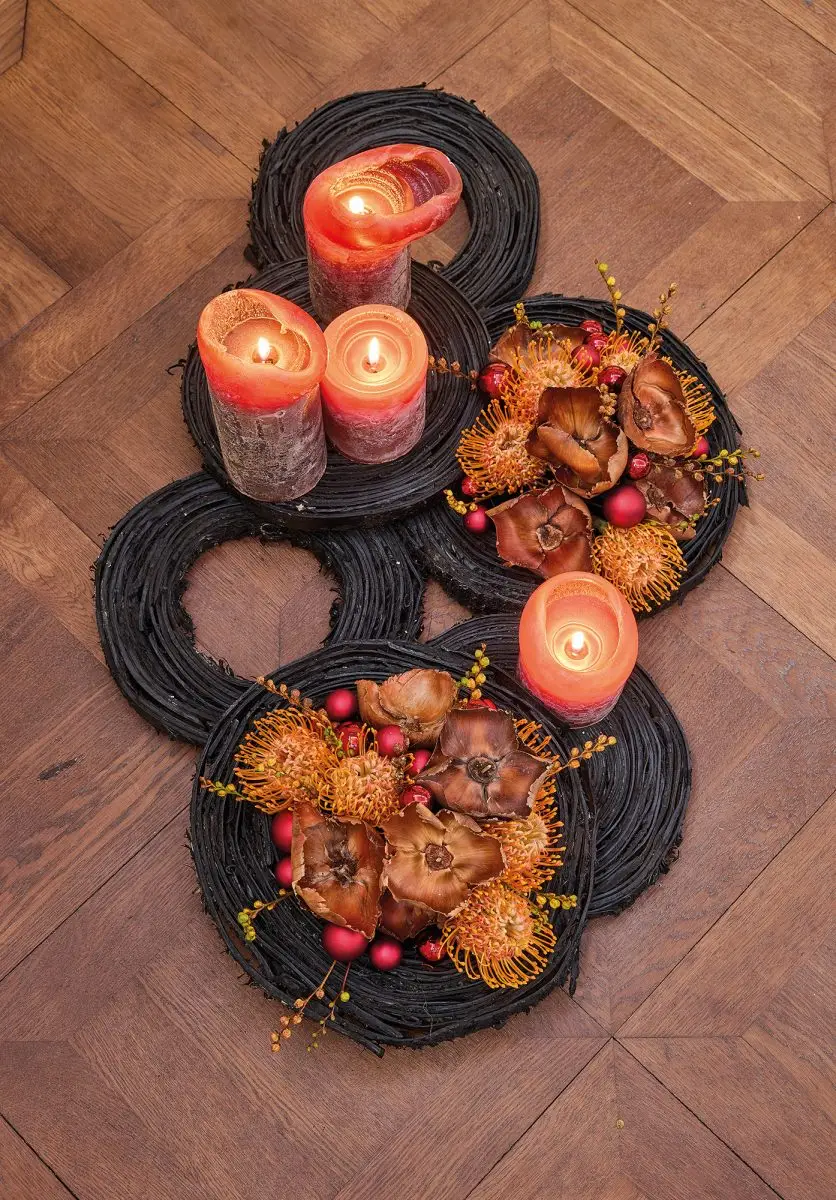
The base consists of rolls of birch bark painted black and attached together. The circular constructions contrast perfectly with the four warm orange Advent candles. The dried flowers, Leucospermum nutans and Crocosmia match the color scheme of the candles. The small red baubles add a festive touch to the alternative Advent arrangement.
High contrast
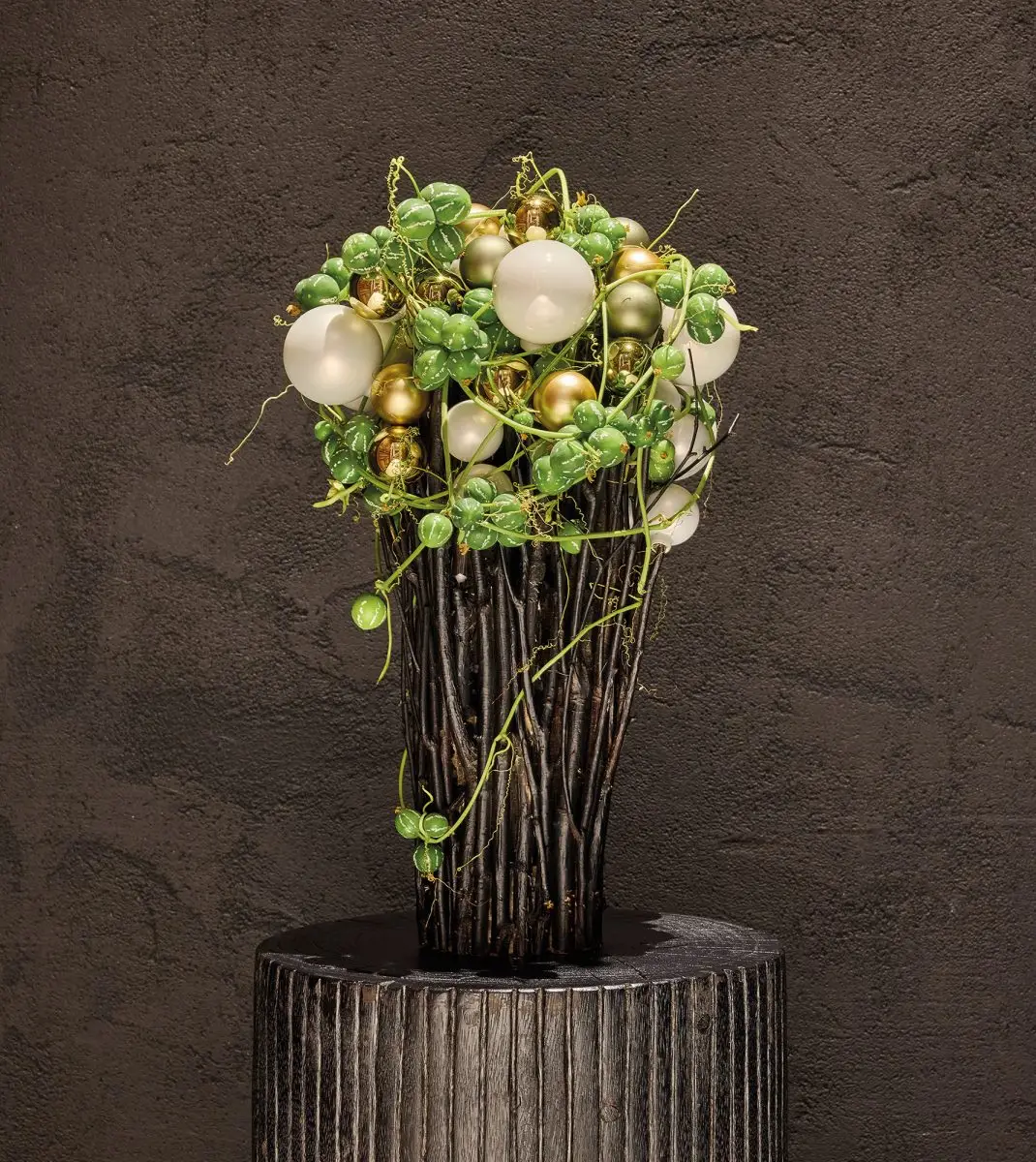
A sturdy vase-shaped branch structure is painted black. The branches are wrapped with the bright green fruiting tendrils of Diplocyclos palmatus. Christmas baubles in white and gold emphasize the contrast with the black branches.
Underwater Dialogue
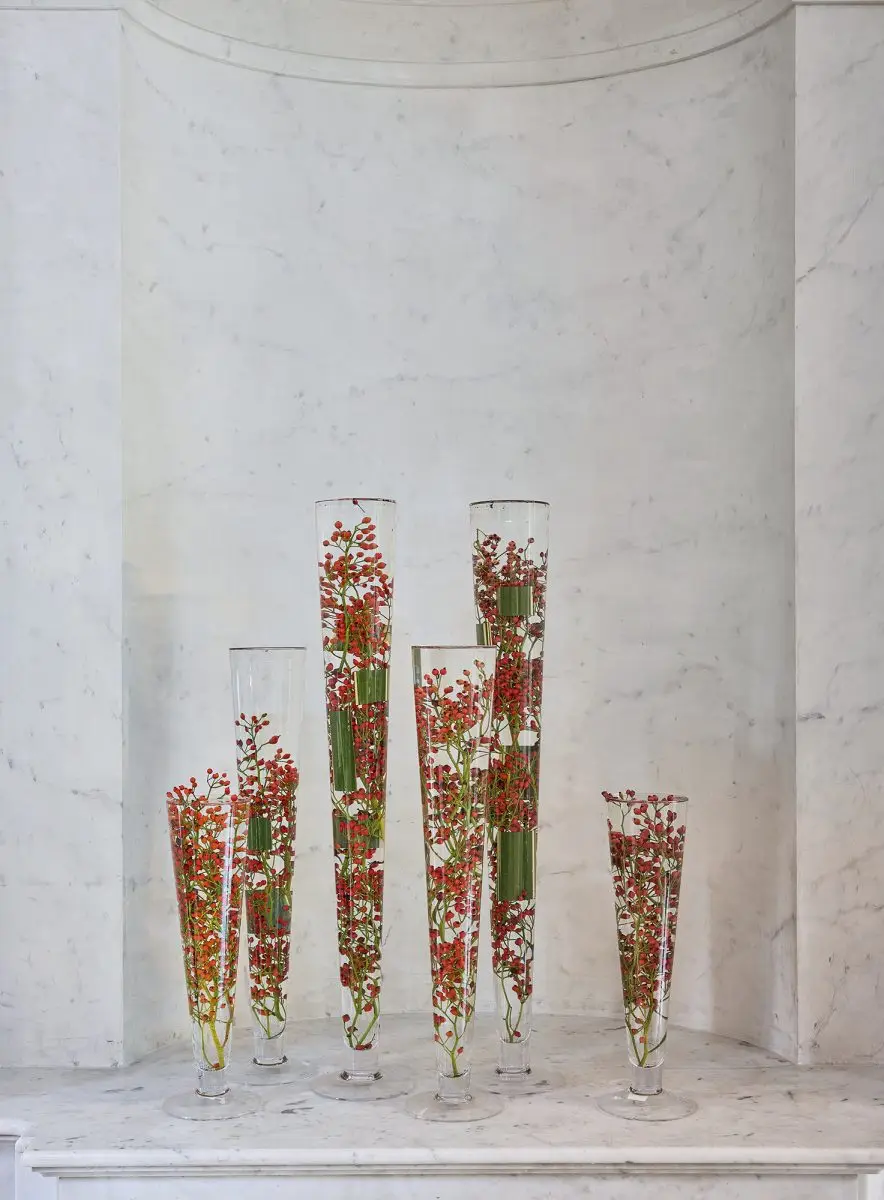
Tall vases filled with rose hips and rectangular pieces of Phormium leaves form a captivating underwater dialogue. The water distorts and adds depth so that the Phormium lines have turned into reflections and the rose hips seem to float in another dimension.
